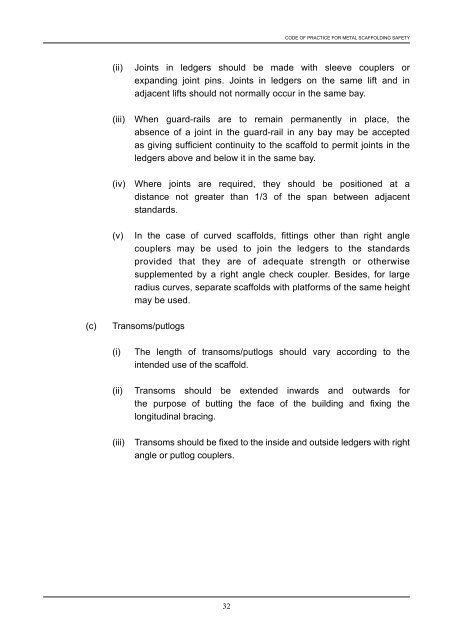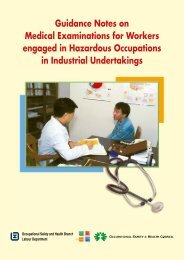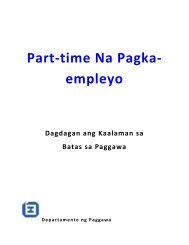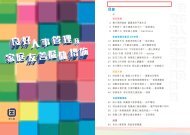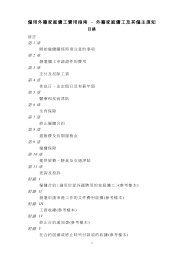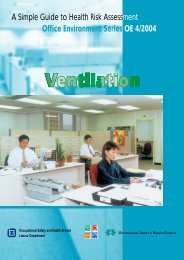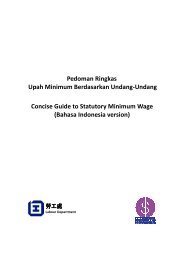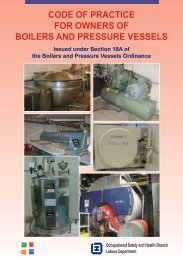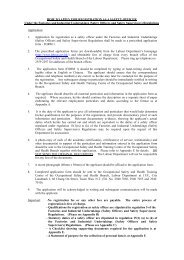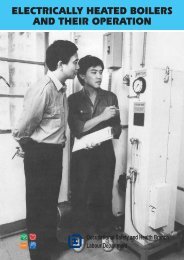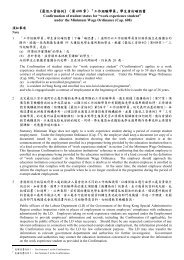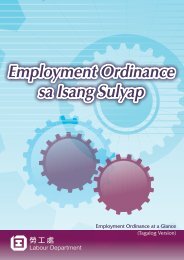CODE OF PRACTICE FOR METAL SCAFFOLDING SAFETY
CODE OF PRACTICE FOR METAL SCAFFOLDING SAFETY
CODE OF PRACTICE FOR METAL SCAFFOLDING SAFETY
You also want an ePaper? Increase the reach of your titles
YUMPU automatically turns print PDFs into web optimized ePapers that Google loves.
32<br />
<strong>CODE</strong> <strong>OF</strong> <strong>PRACTICE</strong> <strong>FOR</strong> <strong>METAL</strong> <strong>SCAFFOLDING</strong> <strong>SAFETY</strong><br />
(ii) Joints in ledgers should be made with sleeve couplers or<br />
expanding joint pins. Joints in ledgers on the same lift and in<br />
adjacent lifts should not normally occur in the same bay.<br />
(iii) When guard-rails are to remain permanently in place, the<br />
absence of a joint in the guard-rail in any bay may be accepted<br />
as giving sufficient continuity to the scaffold to permit joints in the<br />
ledgers above and below it in the same bay.<br />
(iv) Where joints are required, they should be positioned at a<br />
distance not greater than 1/3 of the span between adjacent<br />
standards.<br />
(v) In the case of curved scaffolds, fittings other than right angle<br />
couplers may be used to join the ledgers to the standards<br />
provided that they are of adequate strength or otherwise<br />
supplemented by a right angle check coupler. Besides, for large<br />
radius curves, separate scaffolds with platforms of the same height<br />
may be used.<br />
(c) Transoms/putlogs<br />
(i) The length of transoms/putlogs should vary according to the<br />
intended use of the scaffold.<br />
(ii) Transoms should be extended inwards and outwards for<br />
the purpose of butting the face of the building and fixing the<br />
longitudinal bracing.<br />
(iii) Transoms should be fixed to the inside and outside ledgers with right<br />
angle or putlog couplers.


